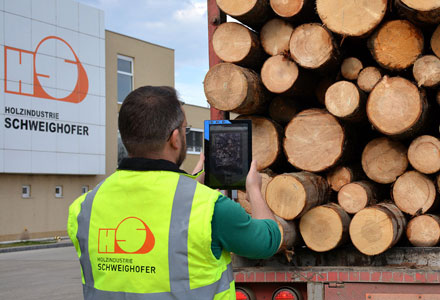
Prosecutors from the Romanian Directorate for Combatting Organized Crime and Terrorism (DIICOT) raided Austrian group Schweighofer Holzindustrie’s factories in Radauti and Sebes. Sources: Romania Insider, Timberbiz
The prosecutors are investigating illegal timber transactions which damaged the state budget by EUR 25 million, according to judicial sources quoted by local Mediafax.
A total of 23 searches took place in Alba, Suceava, Hunedoara, Brasov and Bihor counties as well as in Bucharest. Some of the searches also targeted the offices of the Forestry Directions and Forest Guard.
According to an official press release of the Romanian Police, managers of a local company have coordinated the acquisition of wood sourced from illegal logging activities, starting 2011. The same people were also involved in rigging timber auctions. The company was not named.
Schweighofer Holzindustrie has been accused of processing wood from illegal logging activities in the past but denied the allegations.
In a statement Holzindustrie Schweighofer said it cooperates with the Romanian authorities and fully supports their efforts in the investigation that started on 30 May 2018.
The company says its main principle is to always act within the framework of laws and regulation and it is assisting the authorities.
The company said it had not been yet notified of the scope of the investigation.
At the beginning of 2017, Holzindustrie Schweighofer said it had implemented a state of the art action plan to fight illegal logging in Romania and to support a sustainable timber industry.
Overall, the company invested €1 million in strengthening the security of its supply chain. A major pillar of this action plan is the company’s Timflow-system, a unique GPS-tracking system that monitors the transport routes of saw log trucks from loading point to saw mill gate.
Overall, these measures by far exceed the requirements of the Romanian laws and regulations. One year after implementation, the company took stock of its measures and shared the information with the public.







